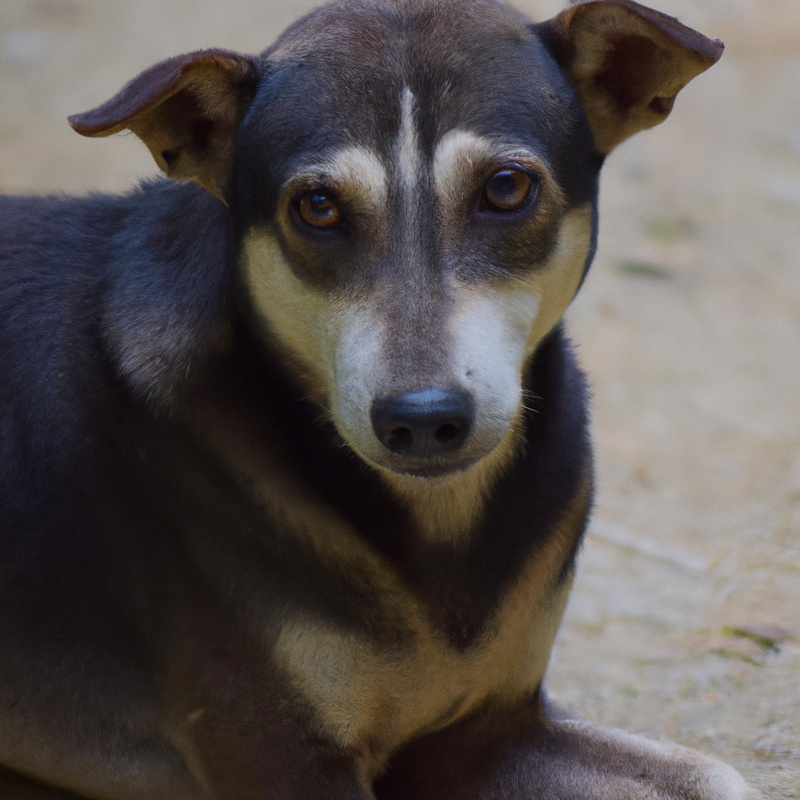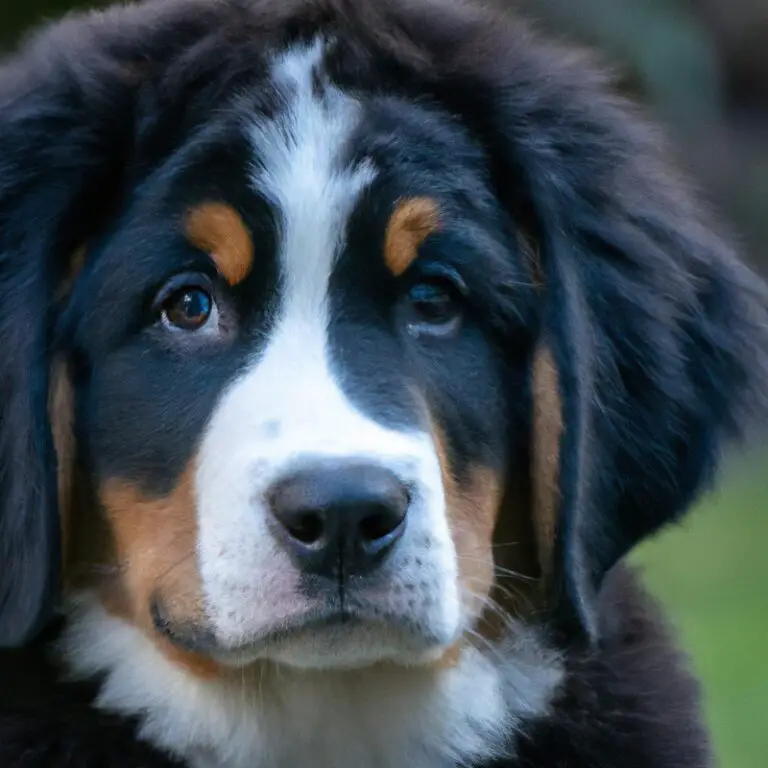How Do I Establish Myself As The Pack Leader For My Bernese Mountain Dog?
Key Takeaways:
- Establishing yourself as the pack leader is crucial for a well-behaved Bernese Mountain Dog.
- Consistency, confidence, and positive reinforcement are key to asserting your leadership.
- Setting boundaries and providing clear rules will help your Bernese Mountain Dog respect your authority.
- Remember, being the pack leader does not mean being harsh or dominant, but rather providing guidance and structure for your dog.
Are you ready to unleash your inner alpha and become the ultimate pack leader for your Bernese Mountain Dog?
Establishing yourself as the leader of the pack is not just about dominance, it’s about building a strong bond based on trust, respect, and clear communication.
In this blog, I’ll walk you through the essential steps to becoming the pack leader your furry friend needs.
From basic training techniques to setting boundaries and establishing house rules, we’ll cover it all.
So, grab your leash, put on your alpha hat, and let’s dive into the fascinating world of pack leadership for Bernese Mountain Dogs!
| Steps to establish yourself as the pack leader for your Bernese Mountain Dog | |
| 1. | Consistent Training |
| 2. | Firm and Clear Boundaries |
| 3. | Positive Reinforcement |
| 4. | Physical Exercise and Mental Stimulation |
| 5. | Leadership in Everyday Interactions |
Understanding the Pack Leader Concept
What Does it Mean to be a Pack Leader?
Being a pack leader means being the one in charge and setting the rules for your Bernese Mountain Dog. It’s about establishing yourself as the authority figure and making sure your dog understands and respects your leadership.
This involves consistent training, providing boundaries and structure, and practicing good communication.
As the pack leader, you should be confident, calm, and assertive in your interactions with your dog. It’s important to lead with love and understanding, while also maintaining control and guiding your dog’s behavior.
Why is Establishing Yourself as the Pack Leader Important?
Establishing yourself as the pack leader is important because it helps create a harmonious and balanced relationship with your Bernese Mountain Dog.
When you are seen as the leader, your dog feels more secure and confident, which can prevent behavior problems.
Being the pack leader also allows you to effectively communicate expectations and boundaries to your dog, leading to better obedience and overall well-being.
Moreover, it establishes trust and respect, ensuring a stronger bond between you and your furry friend.
Building Trust and Respect
Basic Training for your Bernese Mountain Dog
To begin with, consistency is key when it comes to basic training for your Bernese Mountain Dog. Make sure you establish a routine for feeding, exercise, and potty breaks.
Positive reinforcement techniques, such as rewards and treats, work best to encourage good behavior.
Socializing your Bernese Mountain Dog from a young age will also help them become well-adjusted and friendly. Lastly, be patient and stay calm throughout the training process – your dog will respond better to a relaxed and confident leader.

Consistency and Boundaries
Consistency and boundaries are key when establishing yourself as the pack leader for your Bernese Mountain Dog.
Stick to a regular routine for feeding, exercise, and training.
This helps your dog understand what is expected of them and creates a sense of structure.
Set clear rules and boundaries for behavior, and be consistent in enforcing them.
This will help your dog feel secure and understand their place in the pack.
Avoid making exceptions or giving mixed signals, as this can confuse your dog and undermine your authority.
Remain firm but fair in your interactions, and always reward good behavior to reinforce the desired actions.
Positive Reinforcement Techniques
Positive reinforcement is a effective technique to establish yourself as the pack leader for your Bernese Mountain Dog.
Here are some techniques that you can use:
- Reward good behavior: When your dog behaves well, reward them with praise, treats, or playtime.
- Consistency is key: Be consistent with your rewards and expectations, so your dog understands what behavior is desired.
- Use clicker training: Clicker training pairs a distinct sound, like the click of a clicker, with a reward, helping your dog associate the sound with positive reinforcement.
- Be patient and persistent: Rome wasn’t built in a day, and neither is a well-behaved dog. Stay consistent and positive in your training efforts.
- Don’t punish bad behavior: Instead of punishing, redirect your dog’s attention to a desired behavior and reward them for doing it.
By using positive reinforcement techniques, you can build a strong bond with your Bernese Mountain Dog and establish yourself as their trusted leader.
Appropriate Exercise and Mental Stimulation
Meeting Physical Exercise Needs
Meeting the physical exercise needs of your Bernese Mountain Dog is essential to keep them healthy and happy. Regular exercise helps to prevent obesity and promotes muscle tone.
Aim for at least 30 minutes of moderate to high-intensity exercise each day.
Take them on long walks, play fetch, or let them run in a secure area. Engaging in activities like hiking, swimming, and agility training can also be beneficial.
Adjust the exercise routine based on their age, health, and energy level.
Remember to always consult with your veterinarian before starting a new exercise program.

Providing Mental Stimulation
Providing mental stimulation for your Bernese Mountain Dog is important to keep them happy and engaged.
Here are some ways you can do this:
- Puzzle toys: Interactive toys that require problem-solving and treat-dispensing can keep your dog’s mind active.
- Training sessions: Regular training sessions not only help your dog learn new commands but also provide mental stimulation.
- Hide and seek: Hide treats or toys around the house or yard, encouraging your dog to use their sense of smell and memory to find them.
- Nose work: Teach your dog to search for specific scents, such as essential oils or treats, which can be mentally stimulating for them.
- Agility and obedience classes: These activities provide both physical exercise and mental stimulation, as your dog needs to follow instructions and navigate obstacles.
- Rotating toys: By regularly rotating your dog’s toys, you can keep their interest and prevent boredom.
Remember, mental stimulation is just as important as physical exercise for your Bernese Mountain Dog’s overall well-being.
So, try incorporating these activities into your routine to keep them mentally sharp and content.

Incorporating Training Activities
Incorporating training activities is an essential part of establishing yourself as the pack leader for your Bernese Mountain Dog. Regular training sessions can help build a strong bond between you and your dog, while also providing mental stimulation and reinforcing good behaviors.
You can incorporate training activities into your daily routine by including short training sessions, practicing commands during walks, and using interactive toys or puzzles to engage your dog’s mind.
Just remember to be patient, consistent, and positive during training to ensure the best results.
Setting Clear Rules and Expectations
Establishing House Rules
Establishing house rules is an essential part of becoming the pack leader for your Bernese Mountain Dog. Here’s how you can do it:
- Consistency is key: Set clear and consistent rules that everyone in the household follows. This helps your dog understand what is expected of them.
- Be firm but fair: Enforce the rules with gentle discipline and rewards. Avoid harsh punishment and use positive reinforcement to encourage good behavior.
- Start early: Teach your Bernese Mountain Dog the house rules from a young age. This helps them learn and adapt to your expectations more easily.
- Use positive reinforcement: Reward your dog when they follow the rules. This can be in the form of treats, praise, or playtime.
- Be patient: It takes time for your dog to understand and remember the house rules. Be patient and consistent in your training efforts.
By establishing and enforcing clear house rules, you create a structured and harmonious environment where your Bernese Mountain Dog can thrive.
Consistent Obedience Training
Consistent obedience training is key to establishing yourself as the pack leader for your Bernese Mountain Dog. Start by setting clear rules and expectations, and be consistent in enforcing them.
Use positive reinforcement techniques, such as rewards and praise, to reinforce desired behaviors.
Regular practice and repetition will help your dog understand and follow your commands. Remember to be patient and consistent, and avoid using punishment or harsh training methods.
With consistent obedience training, your Bernese Mountain Dog will learn to respect and look to you for guidance.
Encouraging Good Behavior and Discouraging Bad Behavior
To encourage good behavior in your Bernese Mountain Dog, positive reinforcement is key. Reward your dog with treats, praise, or play when they exhibit desired behaviors.
Consistency is important.
Set clear rules and expectations and stick to them. When it comes to discouraging bad behavior, it’s important to redirect your dog’s attention and provide alternatives.
Use positive techniques like ignoring unwanted behaviors and redirecting attention to positive behaviors.
Avoid punishment or harsh methods, as they can be counterproductive and damage the bond between you and your dog.
Handling Feeding and Mealtime
Establish a Feeding Schedule
To establish a feeding schedule for your Bernese Mountain Dog, consistency is key.
Feed your dog at the same times every day to create a routine.
Divide their daily portion of food into two or three meals, depending on their age and activity level.
Stick to the recommended amount of food for their size and adjust as needed.
Avoid feeding table scraps or excess treats, as this can disrupt their balanced diet.
Remember to provide fresh water at all times.
Mealtime Rituals and Rules
During mealtime with your Bernese Mountain Dog, it’s important to establish clear rituals and rules. Here are some guidelines to follow:
- Set a consistent feeding schedule. Feed your dog at the same time each day to establish routine and predictability.
- Use a designated feeding area. This can be a specific spot in your kitchen or another area of your home. Avoid feeding your dog in areas where you eat to reinforce boundaries.
- Require your dog to wait before eating. This teaches patience and helps establish your leadership. Start by having your dog sit and wait for a cue before allowing them to approach their food bowl.
- Use portion control. Having measured meals prevents overeating and encourages a healthy weight for your dog.
- Be present during mealtime. Your presence ensures that your dog understands that you’re in charge and can address any resource guarding or other behavior issues that may arise.
By implementing these mealtime rituals and rules, you can establish yourself as the pack leader and create a balanced and respectful mealtime routine for you and your Bernese Mountain Dog.
Avoiding Food Aggression
To avoid food aggression in your Bernese Mountain Dog, there are a few simple steps you can take:
- Establish yourself as the pack leader by being consistent with rules and boundaries.
- Conduct positive reinforcement training to teach your dog patience and self-control.
- Use food puzzles or interactive toys to make mealtimes more engaging and prevent gulping.
- Feed your dog in a separate and quiet space to minimize distractions and reduce territorial behavior.
- Avoid engaging in any form of confrontation or punishment during mealtime.
By implementing these strategies, you can help your Bernese Mountain Dog develop a healthy and peaceful relationship with food.
Handling Socialization and Pack Dynamics
Introducing your Bernese Mountain Dog to Other Dogs
When introducing your Bernese Mountain Dog to other dogs, it’s important to take it slow and carefully manage the situation.
Here are a few tips to make the process smoother:
- Start with controlled interactions: Begin by introducing your Bernese Mountain Dog to well-behaved and calm dogs in a controlled environment.
- Use positive reinforcement: Reward your Bernese Mountain Dog with treats and praise for calm behavior and positive interactions with other dogs.
- Gradually increase exposure: Slowly expose your Bernese Mountain Dog to different dogs of varying sizes, breeds, and temperaments to help them become more comfortable.
- Be observant: Watch your dog’s body language during interactions to ensure they are comfortable and not displaying signs of fear or aggression.
- Seek professional help if needed: If you’re unsure or your dog is exhibiting problematic behavior, consult with a professional dog trainer or behaviorist for guidance.
Supervising Playtimes and Interactions
Supervising playtimes and interactions is important to maintain a harmonious pack dynamic with your Bernese Mountain Dog. One way to do this is to actively observe their behavior during play sessions, stepping in when necessary to prevent any aggression or dominance issues.
It’s also essential to set clear boundaries and rules, rewarding good behavior and redirecting inappropriate behavior with positive reinforcement.
Regularly socializing your dog with other dogs and people can also help them develop good social skills. Remember, your role as the pack leader is to guide and support your dog during playtimes and interactions.
Teaching Proper Social Skills
Teaching proper social skills to your Bernese Mountain Dog is important for their overall well-being and interactions with others.
Here are a few tips to help you with this:
- Early socialization: Expose your dog to various people, animals, and environments from a young age. This will help them become comfortable and confident in different situations.
- Positive reinforcement: Reward your dog’s good behavior during social interactions. Use treats, praise, and playtime to reinforce their positive actions.
- Controlled introductions: When introducing your dog to new people or animals, do so slowly and in a controlled environment. This helps prevent any potential anxiety or aggression.
- Ongoing training: Continue to reinforce proper social skills through regular training sessions. Consistency and patience are key.
Remember, every dog is unique, so be sure to tailor your approach to your Bernese Mountain Dog’s personality and needs.
With time and effort, you can help them develop into a well-socialized and confident companion.
Frequently Asked Questions
How long does it take to establish myself as the pack leader?
Establishing yourself as the pack leader for your Bernese Mountain Dog can take time and consistency. It varies from dog to dog, but typically, it can take several weeks to a few months for your dog to recognize you as the leader.
During this time, it’s essential to set clear boundaries, provide consistent training, and prioritize positive reinforcement.
Building a strong bond with your dog through mutual trust and respect is key to establishing yourself as the pack leader. Patience and consistency are key!
What if my Bernese Mountain Dog challenges my leadership?
If your Bernese Mountain Dog challenges your leadership, it’s important to address the situation calmly and assertively.
Here’s what you can do:
- Stay calm: Reacting with anger or frustration will only escalate the situation. Stay composed and assertive.
- Set boundaries: Clearly communicate what behaviors are acceptable and what are not. Be consistent in enforcing these boundaries.
- Provide structure: Dogs thrive on routine and structure. Establish a consistent daily routine for feeding, exercise, and playtime.
- Be the decision-maker: Make decisions for your dog, such as when and where to walk, when to eat, and when to play. This helps establish your role as the leader.
- Use positive reinforcement: Reward your dog for good behavior and ignore or redirect unwanted behaviors. Positive reinforcement helps reinforce your leadership.
- Seek professional help if needed: If your dog’s challenging behavior persists or escalates, consult a professional dog trainer or behaviorist for guidance.
Remember, consistency and patience are key when establishing yourself as the pack leader for your Bernese Mountain Dog.
With time and effort, you can build a strong bond and a well-behaved dog.
Is dominance-based training necessary to establish myself as the pack leader?
Dominance-based training is not necessary to establish yourself as the pack leader for your Bernese Mountain Dog.
Instead, focus on building a relationship based on trust, respect, and positive reinforcement.
Provide clear, consistent rules and boundaries, and be a calm and confident leader.
Establishing yourself as the pack leader should be about creating a positive and cooperative partnership with your dog, rather than relying on dominance or force.
Final Verdict
Establishing yourself as the pack leader for your Bernese Mountain Dog is crucial for a harmonious and balanced relationship.
By understanding the pack leader concept and implementing consistent training techniques, you can build trust and respect with your dog.
Providing appropriate exercise and mental stimulation will keep your Bernese Mountain Dog physically and mentally fulfilled.
Setting clear rules and expectations, handling feeding and mealtime, and addressing socialization and pack dynamics will further solidify your leadership role.
Remember, it takes time and consistency, but with patience and positive reinforcement, you can establish yourself as the trusted pack leader your Bernese Mountain Dog needs.








